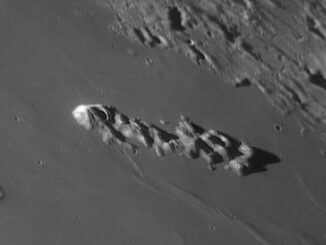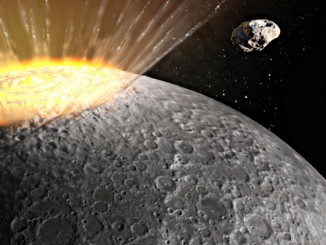
A camera developed by scientists at Arizona State University will join four foreign-built instruments on South Korea’s first lunar orbiter set for launch at the end of 2018, NASA announced Friday.
NASA selected the ShadowCam instrument from proposals submitted by U.S. science teams. Developed by Arizona State University and Malin Space Science Systems, ShadowCam will map terrain and search for evidence of frost or ice deposits inside eternally dark craters near the Moon’s poles, scientists said.
ShadowCam will launch with four South Korean-made instruments on the Korean Pathfinder Lunar Orbiter, which is set for liftoff in December 2018.
The instrument is a rebuild of the narrow-angle camera on NASA’s Lunar Reconnaissance Orbiter, but with one major change.
“The telescope and much of the electronics will be identical,” said Mark Robinson, ShadowCam’s principal investigator at Arizona State University. “The big difference is swapping out the current image sensor for one that is 800 times more sensitive, allowing high resolution imaging within permanently shadowed regions, something the Lunar Reconnaissance Orbiter Camera cannot accomplish.”
The switch to an upgraded image sensor is like going from ISO 100 to ISO 80,000 on a digital camera, according to an ASU press release.
The chance will permit high-resolution, high signal-to-noise imaging, allowing scientists to peer into the bottoms of shadowed craters, where cold pockets could allow ice sheets to form on the airless Moon.

NASA is not currently planning any major lunar missions, but the space agency is funding development of several small probes based on CubeSats to study the Moon. Several of them will fly on the first mission of NASA’s Space Launch System, a heavy-lift rocket expected to lift off on its maiden flight some time in early 2019.
ShadowCam will look for seasonal changes inside the dark craters, called permanently shadowed regions, and map the distribution of boulders. Scientists will combine imagery from ShadowCam and the narrow-angle camera on LRO to create maps inside and outside the permanently shadowed craters, scientists said.
“These merged maps will put us one step closer to enabling landers and rovers to investigate the mysterious lunar PSRs (permanently shadowed regions),” Robinson said in a statement.
NASA said it was seeking proposals for sensors that might reveal answers about lunar resources when it began the instrument selection competition last year that resulted in the choice of ShadowCam.
Astronauts exploring deep space could use water and other materials on the moon to generate breathable air, drinking water and rocket fuel.
“Permanently shadowed regions have been a mystery because the perpetually dark interiors are difficult to image and existing research offers varying interpretations regarding the distribution of volatiles within these cold regions,” said Jason Crusan, director of NASA’s advanced exploration systems division. “Future missions in deep space will be safer and more affordable if we have the capability to harvest lunar resources, and ShadowCam has the potential to greatly increase our understanding of the quality and abundance of those resources in these regions.”
NASA said last year it set aside $15 million for a U.S. contribution to the South Korean Moon mission. The cost of ShadowCam was not disclosed Friday, and officials did not respond to questions on the selection.

Credit: Korea Aerospace Research Institute (KARI)
The Korea Pathfinder Lunar Orbiter, or KLPO, is the first of a series of orbiters and landers South Korea plans to send to the Moon.
The 1,200-pound (550-kilogramme) spacecraft, built in South Korea, will launch on a rocket purchased from an external vendor, then enter a polar orbit around 60 miles (100 kilometres) above the Moon.
“We are pleased with the addition of NASA’s ShadowCam instrument,” said Seok Weon Choi, director of the lunar exploration program office at the Korea Aerospace Research Institute, or KARI. “KPLO is an exciting mission and will reveal much about the Moon for us and our spacefaring partners.”
KLPO’s other instruments, all from South Korea, include a high-resolution camera to map lunar terrain, a polarimetric camera to study space weathering’s effects on the lunar surface, a gamma ray spectrometer to map major elements and water in the lunar crust, and a magnetometer will measure the Moon’s magnetism.
Email the author.
Follow Stephen Clark on Twitter: @StephenClark1.



